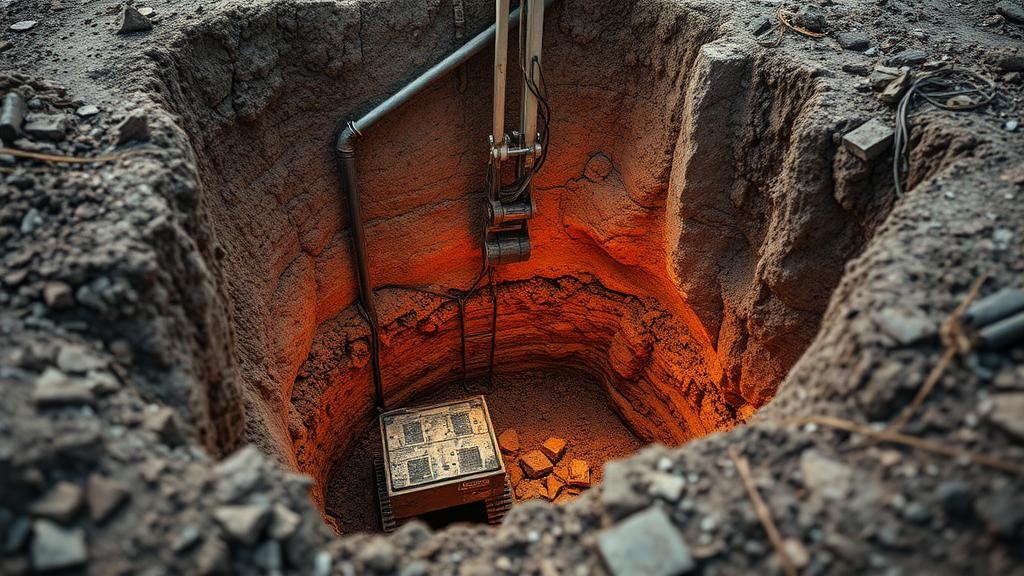How to Safeguard Excavation Crews in Areas With Unstable Structural Traps
How to Safeguard Excavation Crews in Areas With Unstable Structural Traps
In the construction industry, excavating in areas with unstable structural conditions poses significant safety risks to crews. Understanding the nature of these hazards and implementing effective safety protocols is essential to safeguard workers and ensure project success.
Understanding Unstable Structural Traps
Unstable structural traps refer to geological formations that may collapse or present hazards during excavation. These can include areas with loose soil, saturated ground, or proximity to natural or artificial structures that lack stability. For example, excavating near old landfills, riverbanks, or underground voids can present unforeseen dangers that may lead to soil cave-ins or structural failures.
Identifying Hazards
Before any excavation begins, it is critical to conduct a thorough site assessment to identify potential hazards. This process should include:
- Soil character analysis: Conduct tests to identify soil types and stability. Cohesive soils, such as clay, may behave differently than granular soils, like sand.
- Geological surveys: Use geological maps and surveys to investigate the grounds history and any previous collapses or failures.
- Groundwater monitoring: Measure the water table and monitor changes in groundwater levels that could destabilize soil.
For example, in 2010, a collapse occurred during a trench excavation at a construction site in Manhattan due to uncharted underground utilities and saturated soil conditions. This incident resulted in injuries to multiple workers and highlighted the importance of thorough pre-excavation assessments.
Useing Safety Protocols
Establishing robust safety protocols tailored to the identified risks can significantly reduce accidents associated with unstable structural traps. Key measures include:
- Trenching and shoring systems: Use proper trench boxes, shields, and bracing techniques to support excavations. OSHA recommends a minimum requirement that trenches deeper than five feet be either sloped or supported to prevent cave-ins.
- Regular safety training: Ensure all crew members are trained in recognizing hazards and are familiar with emergency protocols and evacuation routes.
- Establishing exclusion zones: Clearly mark areas where excavation work is underway to keep unqualified personnel away from potential risks.
For example, an extensive excavation project for a new subway line in London used reinforced shoring structures that helped maintain stability in an area known for waterlogged soil, effectively protecting workers from potential hazards.
Monitoring and Maintenance
Continuous monitoring during excavation is essential to detect changing conditions. This can involve:
- Regular inspections: Assign a qualified safety officer to perform daily inspections of the excavation site for signs of instability or unforeseen hazards.
- Instrumentation: Use tools such as inclinometers and piezometers to monitor movement and assess soil stability over time.
- Weather considerations: Take note of weather conditions, such as heavy rain or freezing temperatures, which can affect soil integrity and increase risk.
During a notable construction project in Tokyo, continuous monitoring allowed the team to respond promptly to a sudden increase in groundwater that threatened excavation integrity, ultimately averting a potential disaster.
Real-world Applications and Case Studies
Several case studies illustrate the necessity of safeguarding excavation crews. In 1999, during the construction of a new shopping center in California, a trench collapsed due to inadequate shoring in soft soils. The resulting accident resulted in significant fines for failing to comply with safety regulations.
On the other hand, in 2015, an excavation project in Sydney implemented state-of-the-art soil stabilization techniques, including the injection of chemical stabilizers, which provided necessary support and prevented collapse, ensuring the safety of all personnel involved.
Actionable Takeaways
To safeguard excavation crews in areas with unstable structural traps, consider the following actionable insights:
- Conduct comprehensive site assessments before excavation work begins.
- Use robust safety measures tailored to the specific conditions of the excavation site.
- Prioritize monitoring during the excavation process and train crews in safety protocols.
By following these guidelines, construction teams can significantly mitigate risks, protect their workers, and enhance overall operational efficiency in potentially hazardous excavation environments.


